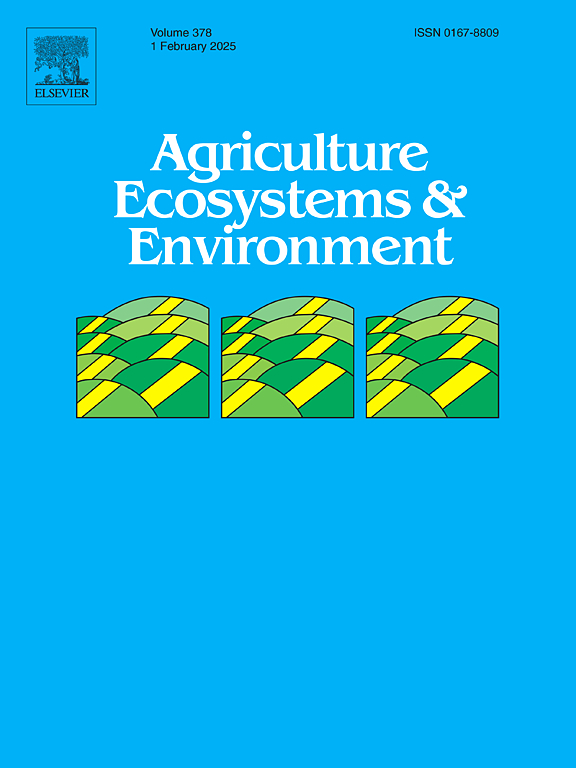Single-peaked responses of grassland productivity to grazing intensity
IF 6
1区 农林科学
Q1 AGRICULTURE, MULTIDISCIPLINARY
引用次数: 0
Abstract
How the rapidly developing livestock grazing affects grassland aboveground net primary productivity (ANPP) is uncertain. The grazing optimization hypothesis (GOH) predicts that appropriate grazing pressure benefits ANPP and that the response of ANPP to grazing intensity follows a single-peaked pattern, but it remains controversial. Here, we conducted a global meta-analysis with 376 pairs of observations for ANPP to investigate the responses of grassland ANPP to stocking rate and forage consumption rate (FCR). Results showed that there was no significant relationship between stocking rate and ANPP response, primarily because the effect of stocking rate varied according to climatic conditions. FCRs were calculated using three methods (FCR I, II, and III), with FCR III providing a precise estimate of the actual FCR. ANPP responded unimodally to FCR III on the global scale, with the ANPP response peaking (12 % increase) at the optimal grazing intensity (FCR III = 58 %). The results for FCR I and FCR II also corroborated the single-peaked effect of the actual FCR. Based on our preliminary evidence, we propose a hypothesis that the single-peaked effect of FCR is consistent on a global scale, but this needs to be confirmed by further research. The unimodal relationship between ANPP responses and grazing intensity we found supports the GOH and informs win-win outcomes for grassland productivity and livestock production.
草地生产力对放牧强度的单峰响应
快速发展的畜牧业对草地地上净初级生产力的影响是不确定的。放牧优化假设(GOH)预测适当的放牧压力有利于ANPP,且ANPP对放牧强度的响应遵循单峰模式,但这一假设仍存在争议。本文利用376对ANPP观测数据进行meta分析,探讨草地ANPP对载畜率和草料消耗率(FCR)的响应。结果表明,载畜率对ANPP响应的影响不显著,主要是因为载畜率的影响随气候条件的不同而不同。FCR采用三种方法(FCR I、II和III)计算,其中FCR III提供了实际FCR的精确估计。在全球尺度上,ANPP对FCR III的响应呈单模态,在最优放牧强度下(FCR III = 58 %),ANPP的响应达到峰值(增加12 %)。FCR I和FCR II的结果也证实了实际FCR的单峰效应。基于我们的初步证据,我们提出一个假设,即FCR的单峰效应在全球范围内是一致的,但这需要进一步的研究来证实。我们发现ANPP响应与放牧强度之间的单峰关系支持了GOH,并为草地生产力和牲畜生产提供了双赢的结果。
本文章由计算机程序翻译,如有差异,请以英文原文为准。
求助全文
约1分钟内获得全文
求助全文
来源期刊

Agriculture, Ecosystems & Environment
环境科学-环境科学
CiteScore
11.70
自引率
9.10%
发文量
392
审稿时长
26 days
期刊介绍:
Agriculture, Ecosystems and Environment publishes scientific articles dealing with the interface between agroecosystems and the natural environment, specifically how agriculture influences the environment and how changes in that environment impact agroecosystems. Preference is given to papers from experimental and observational research at the field, system or landscape level, from studies that enhance our understanding of processes using data-based biophysical modelling, and papers that bridge scientific disciplines and integrate knowledge. All papers should be placed in an international or wide comparative context.
 求助内容:
求助内容: 应助结果提醒方式:
应助结果提醒方式:


